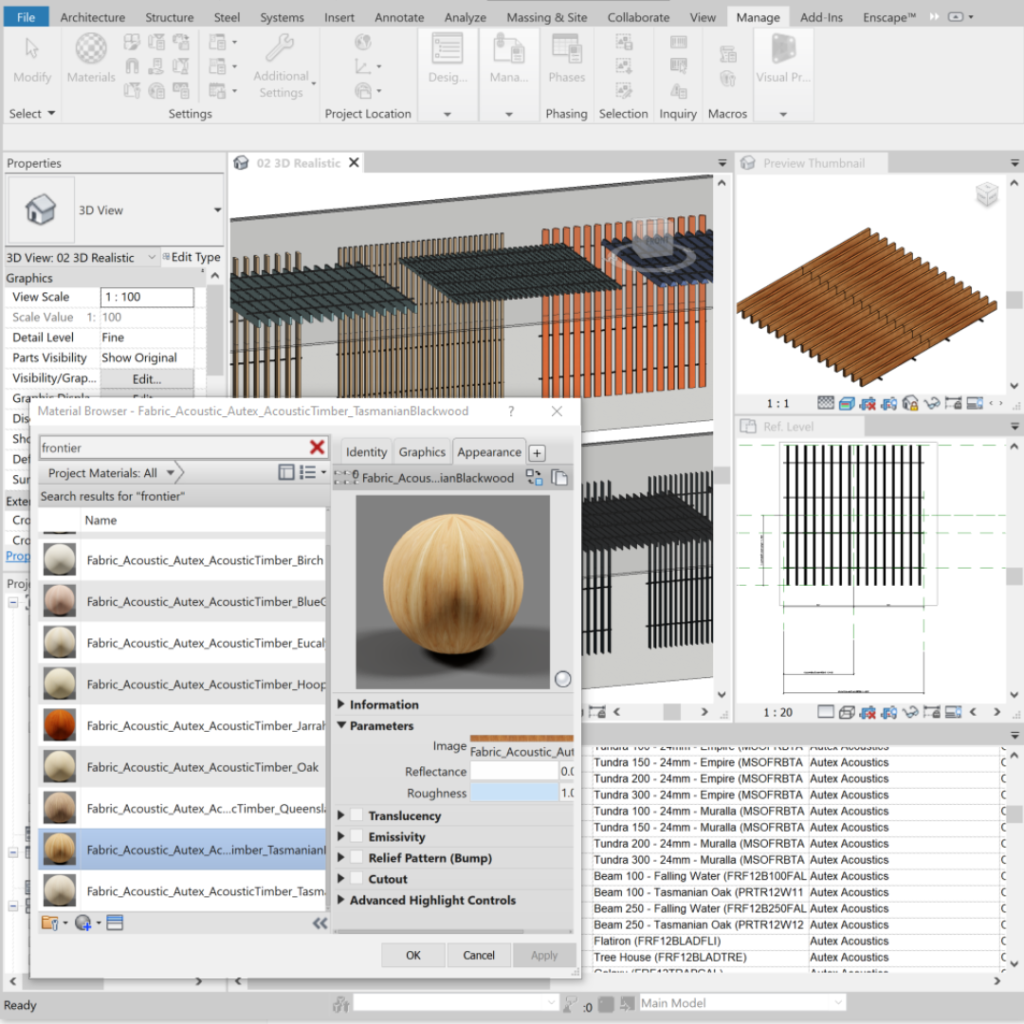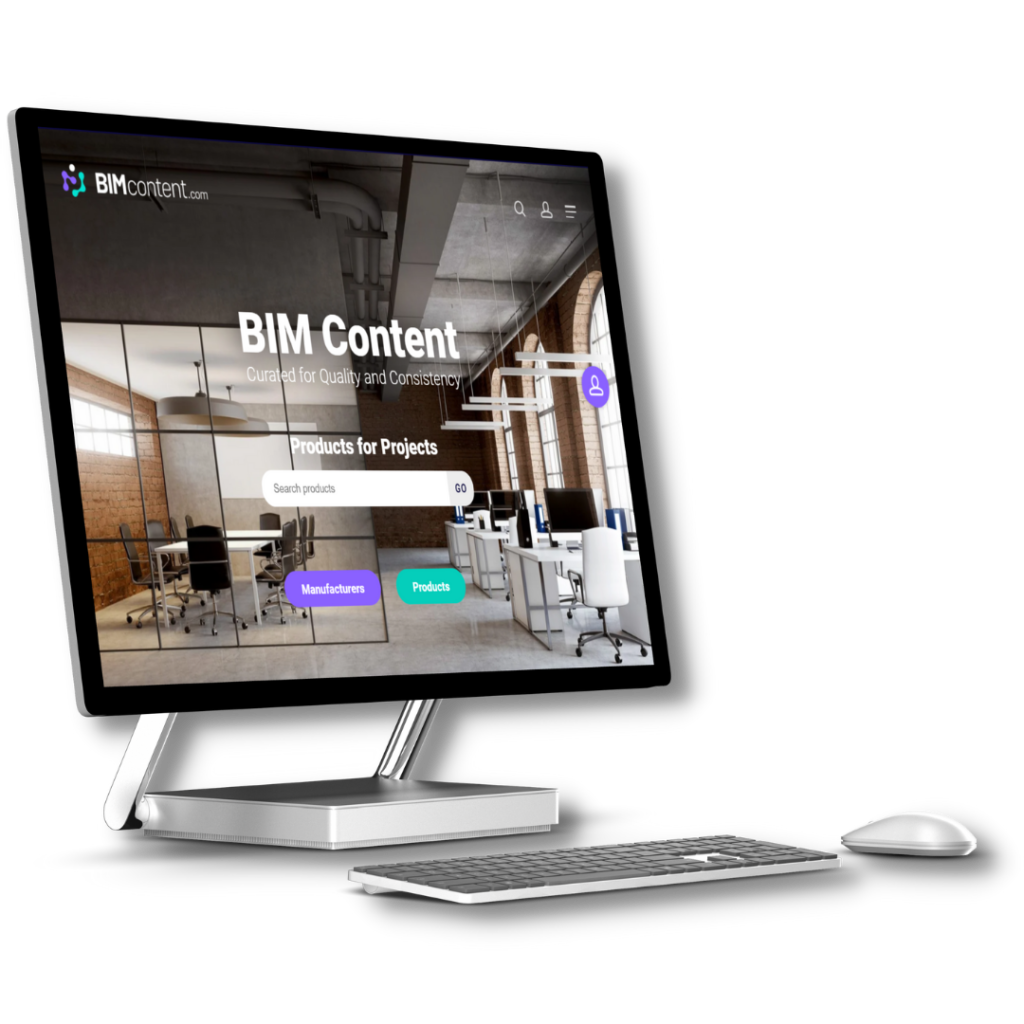What is BIM?
BIM is an acronym for Building Information Modeling. BIM is a process supported by various tools and technologies involving the generation and management of digital representations of physical objects.
ISO 19650-1:2018 defines BIM as: Use of a shared digital representation of a built asset to facilitate design, construction and operation processes to form a reliable basis for decisions.
Traditionally, building design has been reliant upon two-dimensional technical drawings such as plans and elevations. BIM extends the three primary spatial dimensions (width, height and depth) to also incorporate information about time, cost, asset management and sustainability. BIM covers more than just geometry, it also covers spatial relationships, geospatial information, quantities and properties of building components (for example, inclusion of manufacturer details and contact information) and enables a wide range of collaborative processes from initial planning through to construction and beyond.
BIM authoring tools present a design as combinations of “objects”, generic or product-specific, that carry their geometry, relations, and attributes. BIM applications allow the extraction of different views from a building model for drawing production, scheduling, specification, procurement and to perform analysis and coordination tasks such as clash-detection and sustainability evaluation. These different views are automatically consistent, being based on a single definition of each object instance.
What is BIM content and what are BIM objects?
The generic term BIM content, sometimes interchangeably used with the term BIM object, generally means a digital representation of a physical product, equipment or building material used by design professionals such as architects and engineers when designing buildings.
Manufacturer BIM content incorporates a visual representation of a product, often as three-dimensional geometry, as well as the technical information associated with the identification of the product such as manufacturer name and product ID / model number, and in some cases, materials, specification data, power, water, plumbing connections and performance metrics.
BIM content can come in several different formats and with different purposes. The BIM content hosted on BIMcontent.com is predominantly in the specific software formats of Revit and Archicad.

Does IGS Group provide Revit content creation services?

Yes, Revit content creation is our specialty for IGS.
IGS Group has been providing Revit content creation services since 2009 and has created Revit content for many of the world’s most prominent building product manufacturers and design firms. Headquartered in Australia and with offices in Melbourne, Adelaide and Brisbane, IGS Group is internationally recognised as one of the world’s leading Revit content service providers, and specialists in creating Revit families and Revit libraries that align with the needs of the industry’s most prolific commercial architecture and engineering firms. Key to IGS’ Revit content creation and BIM content library development expertise is our team members having worked previously as BIM Managers, Revit Content Creators and Designers in building design and consulting firms.
If you are a building product manufacturer or a design firm that requires Revit content creation services, please reach out to us here.
If manufacturers invest in having Revit content created, will their products get specified more?
Being the specified supplier often provides an advantage at procurement time, so many manufacturers invest time, effort and money into various strategies that increase their specification volumes as a way of driving sales. By providing high-quality Revit content – with quality being a paramount factor in determining the results of the investment – manufacturers are making the task of documenting their products easier and faster for specifiers.
Designers are being asked to deliver more than ever to their clients by way of VR experiences, high-quality renders, coordinated 3D models, detailed 2D drawings and quantified schedules, often without any additional fees being derived. Building product manufacturers that can help designers create their deliverables more efficiently via quality Revit content are often seen as preferred suppliers as they are providing commercial value to the designer working on the project. The premise here is somewhat simple and can be summarised as follows: make your products easier for designers to specify and you will be specified more often. This of course isn’t limited just to the provision of high-quality Revit content, but other initiatives such as the usability of the manufacturer’s website, breadth and accessibility of technical data for products, knowledge of their sales and support teams, product certifications and other specifier support services.
A vital component of Revit content is the metadata embedded in the files. IGS creates and structures this data so that when your product is placed into a project, the product not only appears visually in the project (i.e. the 3D model and 2D drawings) but also in the appropriate schedule(s) used as a reference for procurement. Key information often attained from the Revit content includes your Brand Name, Model No / SKU / ID and Description. This is a key factor in ensuring your investment results in actual product sales.
All things being equal, having quality BIM (Revit) content available for your products, and making it easily accessible from a platform like BIMcontent.com will help you be seen more often and ensure you are providing the tools designers need to put your products in their projects. But this is just one of many things manufacturers should do if they are wanting to grow sales through specifications. It’s an increasingly important one as the process of finding, evaluating and documenting products in projects becomes more digital, but it’s just one of several factors nevertheless.
What are the benefits of hosting our content on BIMcontent.com as well as our own website?
Hosting your Revit content on BIMcontent.com enables designers to access the digital product data they want, when they want it, efficiently, in a format that suits their needs and most importantly – from a trusted resource.
Our ever-growing user base includes BIM managers, architects and engineers from many of the world’s most prolific design practices and the platform itself was designed in consultation with leaders from these firms.
Our customised website integration can be implemented in 5 minutes, meaning your content can also be hosted, managed and presented optimally on your company website.
We provide marketing support including promotional videos, social posts, technical copywriting and promotion of your brand and products via BIMcontent.com social platforms and e-newsletters to users.
BIMcontent.com subscriptions include detailed analytics which help you to track and identify which firms are downloading and using your content so your sales team can be hyper-targeted with their conversations in the market.
A BIMcontent.com subscription is all-inclusive, there is no cap on product numbers, product updates, analytics access, or marketing support.
And if you or your clients experience any issues with BIMcontent.com, the content hosted on the platform or via the website integration – we’re always on hand with tech support.
If you’d like to learn more about the subscription inclusions, please reach out to us here.
Why is BIMcontent.com so strict about the quality and consistency of Revit content hosted on the site?
Let’s think about this by using a comparison.
As a building product manufacturer, the quality of your products is vital to your company’s success. Customers rely on the guarantee of quality that comes with your brand, which is why they choose to work with you consistently. If a new range of products is introduced that fails to meet the same standards, trust can quickly be lost, there is an inferred risk in buying or specifying your products and your customers start looking for another supplier they can trust. Ergo, it is generally a better strategy to have a slightly smaller portfolio if the trade-off is adding products that compromise the trust of your customers.
It is the same with Revit content – inferior quality BIM content has the potential to cause serious issues to project design models. Poor quality Revit content can cause major issues such as documentation not appearing correctly, elements being in the wrong location or impossible to place correctly, schedules and calculations being incorrect, visualisations and renders having a poor appearance, models being slow to work on, and even the whole project models crashing or becoming corrupted.
Designers use BIMcontent.com as their primary project design resource because they know they can trust the quality of the Revit content hosted on the platform, owing to our stringent quality controls. This quality assurance is the reason BIMcontent.com is the first port of call for a growing number of design firms seeking product models for their projects, which in turn provides commercial value to our manufacturer partners.
Why is there so much more Revit content on BIMcontent.com than any other format?
The origins of BIMcontent.com are in IGS Group providing BIM content creation services to building product manufacturers based in Australia and New Zealand, and later, in the United States and various parts of Europe. In these regions, Revit is the model authoring tool used by most commercial architecture and engineering practices.
To derive maximum return on their investment in BIM content, building product manufacturers have traditionally been more inclined to invest in Revit content than any other native content format, such as Archicad. Revit content is what building product manufacturers are asked for most by specifiers, so it is Revit content they ask IGS Group to create for them most frequently.
IGS Group does not believe or recommend that Revit is ‘better’ than Archicad, or vice versa. Ideally, manufacturers of architectural-based building products would offer both formats to best accommodate the needs of Revit and Archicad users, who make up most commercial architecture designers in these regions.

If I already have Revit content, can I host it on BIMcontent.com?
Yes, but only if it meets our quality standards and passes our QA check.
Whilst there are no restrictions on the creation origin, all Revit content hosted on BIMcontent.com must adhere to the BIMcontent.com Revit Content Quality Standard. This ensures the consistency and reliability of the Revit families for building design professionals seeking to use the Revit families from BIMcontent.com in their projects and to integrate them into their own internal Revit libraries.
For manufacturers wishing to host their Revit content on BIMcontent.com, a thorough review of the content must first be undertaken to assess overall quality and alignment with the BIMcontent.com Revit Content Quality Standard.
In addition to alignment with the BIMcontent.com Revit Content Quality Standard, library reviews also consider and ensure the Revit content:
- performs well in a BIM project environment;
- adequately depicts the aesthetic properties of your products;
- incorporates sufficient metadata to facilitate baseline tender/procurement processes (without ‘going overboard’);
- produces documentation that allows users to generate project schedules and drawings;
- that the overall library is structured in a logical, user-friendly and technically adept manner
Should your Revit files require improvement, we can provide you with a quote to complete the upgrade so your content can be more aligned with industry best practices and generate maximum return on investment for your business.
Why is it often easier to recreate Revit families ‘from scratch’ than to edit them when wanting to improve quality?
Recreating Revit families instead of editing them when wanting to improve usability and overall quality can often be easier for several reasons. These include:
- Complexity: Revit families can be complex and may contain a large number of parameters, behaviours, and relationships. Editing an existing family can be difficult and time-consuming, especially if the original creator did not document the family well. In these cases, it may be more efficient to start from scratch and create a new, clean family.
- Quality issues: Due to their complexity, Revit families can have a large number of quality issues such as errors, imported geometry, poor overall structure, incorrect classification categories, use of unsuitable family templates, and missing or outdated information. These issues can make editing the family difficult, and it may be easier to recreate the family from scratch, ensuring it’s accurate, up-to-date, predictable in its use and behaves as intended within the project model.
- Standardization: Revit families should adhere to certain standards and best practices. If a family was created without following a specific standard, it may be easier to recreate the family, rather than trying to retrofit it to meet the standards depending on how it varies from the intended standard.
- Revit version control: Revit Families need to be compatible with the intended version of the software. Some families may not be compatible or work as intended with newer versions. This can be due to outdated or deprecated features used in the family. In this scenario, recreating the family from scratch in a later version of the software may be the best option.
- Flexibility: Sometimes recreating the Revit family provides more flexibility and options in terms of customizing the family to the specific needs of the project or user.
Overall, recreating Revit families rather than editing them is often easier and provides far better outcomes when improving quality, as it allows for a clean slate to work with and ensures the families meet specific standards and current best practices.

Can IGS Provide You A Competitive Advantage?
Can You Utilise Our Skills, Passion & Determination?

